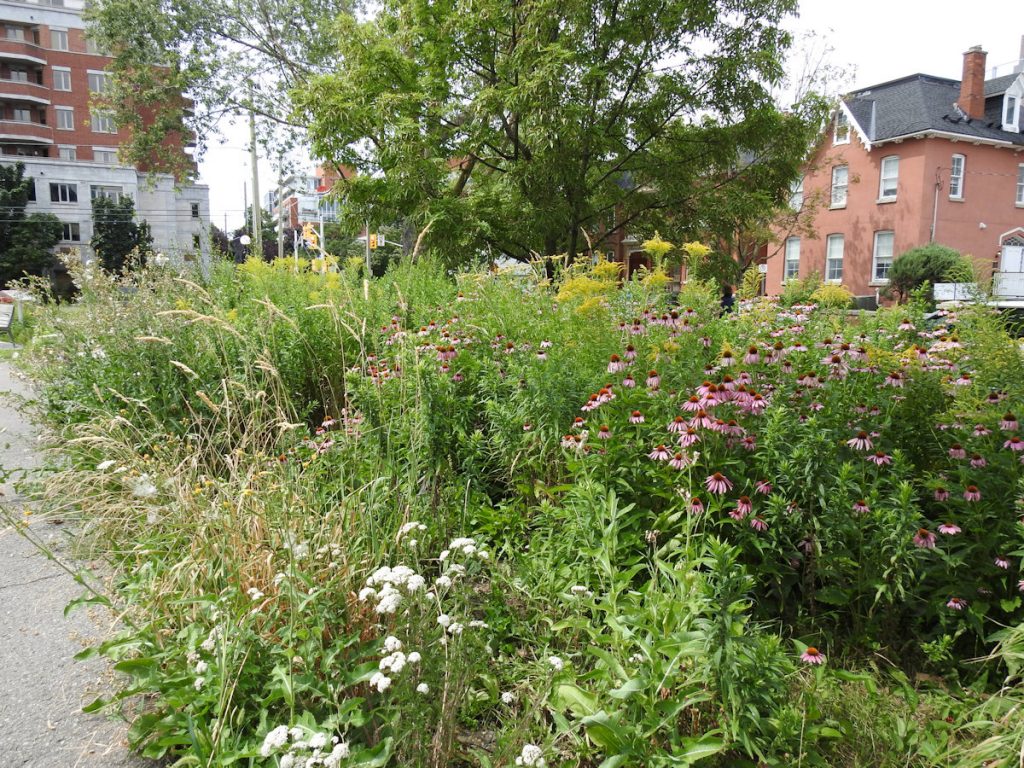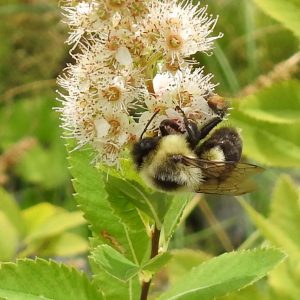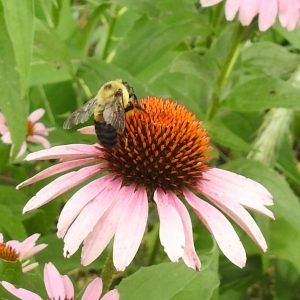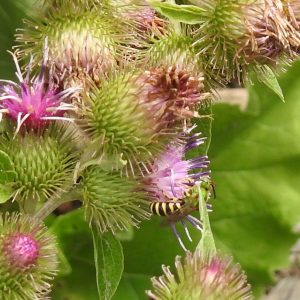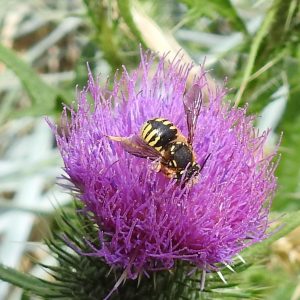by Sandy Garland
Our Sunday survey this week (August 11, 2019) was in the Landscapes of Canada gardens on the O’Connor Street side of the Canadian Museum of Nature. These gardens are intended to represent three major ecozones: arctic tundra, prairie grasslands, and boreal forest.
The arctic area contains a number of sedges and a few northern species, but many are not able to survive in our more southern climate. The prairie is more successful, with a number of native grasses and meadow wildflowers. The boreal forest area, which began with a number of woodland species has suffered from foot traffic, but still contains such local natives as Thimbleweed and Columbine.
University of Ottawa students, Véronique and Jasmine, joined me to look for pollinators, and we found a great diversity, including the ones pictured below. All have been submitted to our iNaturalist project, and we’ll fill in species names as we learn them.
We’re finding it interesting – and somewhat disappointing – that we often see the most pollinators on non-native, unwanted species, such as Purple Loosestrife (Lythrum salicaria) and Common Burdock (Arctium minus). However, natives, such as Wild Bergamot (Monarda fistulosa), Meadowsweet (Spiraea alba), and most goldenrods (Solidago spp.) are also heavily used by a range of pollinators.
Most aster species are not blooming yet. In the next month or so, we expect to see many pollinators on such favourites as New England (Symphyotrichum novae-angliae) and Heart-leaved Aster (Symphyotrichum cordifolium).
What pollinators are you seeing in your garden? Which plants are attracting the most bees, wasps, flower flies? Send us your photos or upload them to our iNaturalist project so that we can all share the information we need to help our native pollinators.
